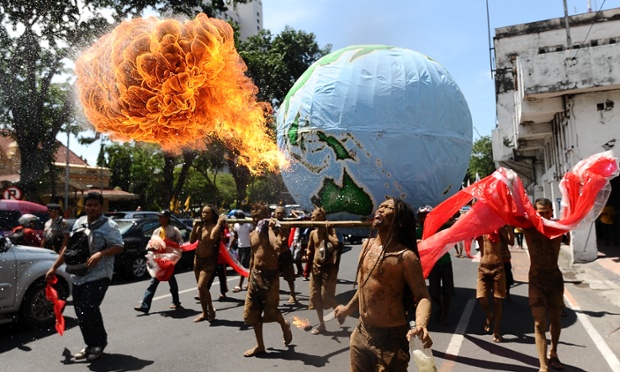 |
| Indonesian Environmental Rides and fishermen group perform long march and theatrical action |
Verité carried out research on the presence of indicators of forced labor in the production of ten goods in seven countries from 2008 through 2011. Research was carried out on the production of shrimp in Bangladesh; Brazil-nuts, cattle, corn, and peanuts in Bolivia; sugar in the Dominican Republic; coffee in Guatemala; fish in Indonesia; rubber in Liberia; and tuna in the Philippines. The following report is based on research on the presence of indicators of forced labor in certain types of fishing in Indonesia. This research was not intended to determine the existence or scale of forced labor in the countries and sectors under study, but rather to identify the presence of indicators of forced labor and factors that increased workers‘ vulnerability to labor exploitation.
Fishing plays a large role in the Indonesian economy; over 6.2 million people are involved in fishing activities in Indonesia and fishing exports earned the country over USD 2.66 billion in 2010.1 Several aspects of Indonesian fishing activity have earned significant international attention, including jermal (platform) fishing, as well as illegal fishing. With the exception of international attention paid to forced child labor on jermals, little previous research had been conducted specifically on the indicators of forced labor in these sectors.
How the burning of fossil fuels was linked to a warming world in 1938

No comments:
Post a Comment